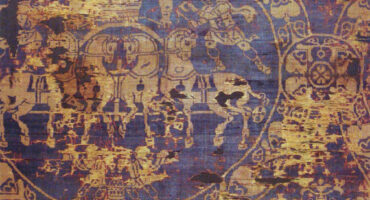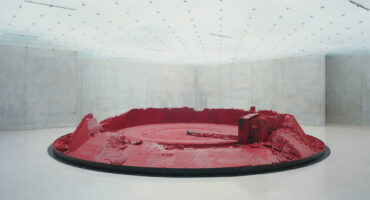Textile & Clay: Ancient to Contemporary Testimonies
In an age of digital impermanence, where identities are increasingly shaped by ephemeral social media posts and fleeting online interactions, some artists are turning to humanity's most ancient materials to explore who we are. Clay and textile—materials that have traced human civilization for millennia—are experiencing a renaissance as powerful mediums for exploring contemporary identity.
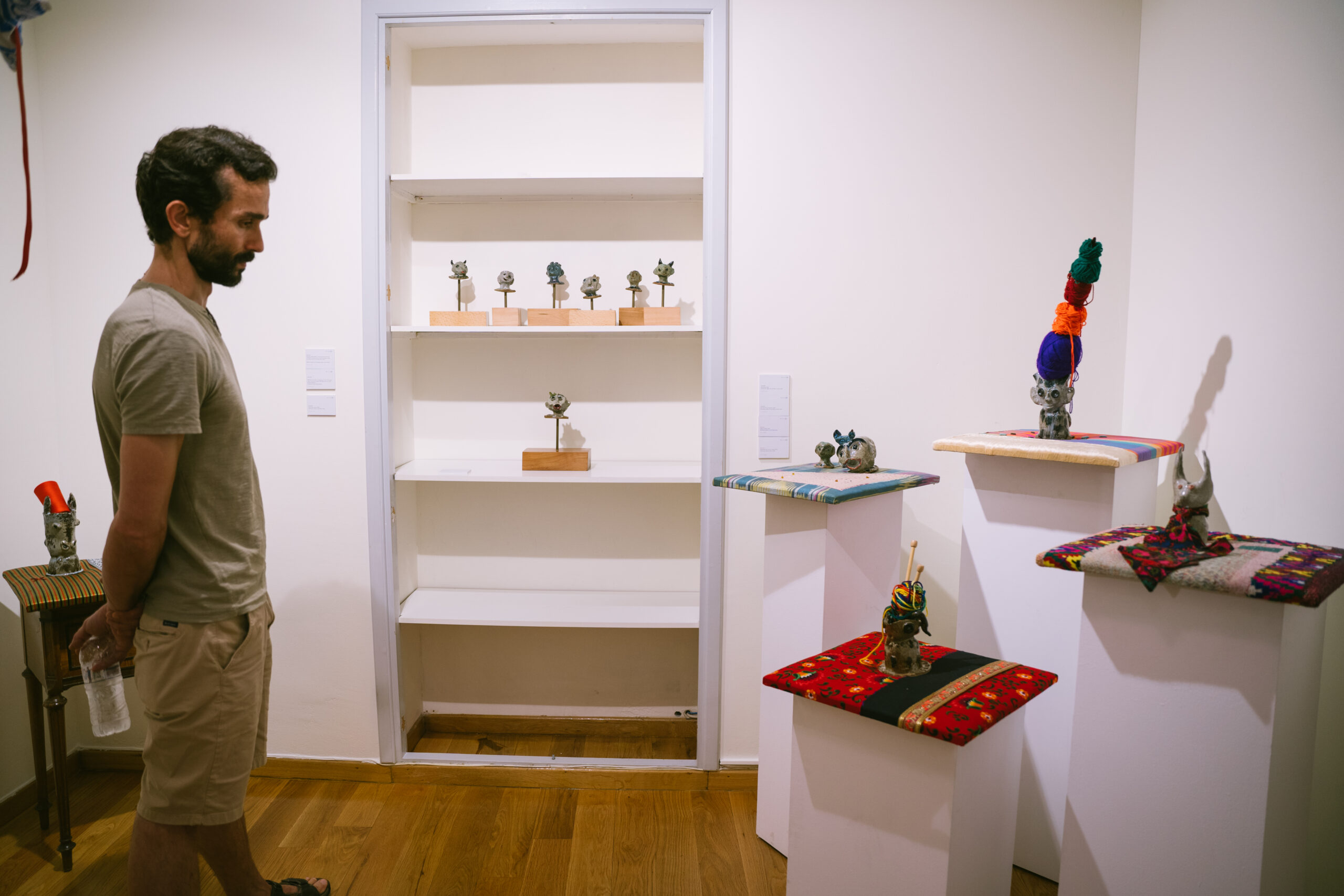
"These materials remember," explains Dr. Tamara Chalabi, curator of Material Witnesses, a groundbreaking exhibition on view until 27 September 2025 at the ACG in Athens. "Every fingerprint pressed into clay, every stitch woven into fabric becomes a permanent record of human presence." This capacity for memory makes these materials uniquely suited to explore questions of belonging in our increasingly fragmented world.
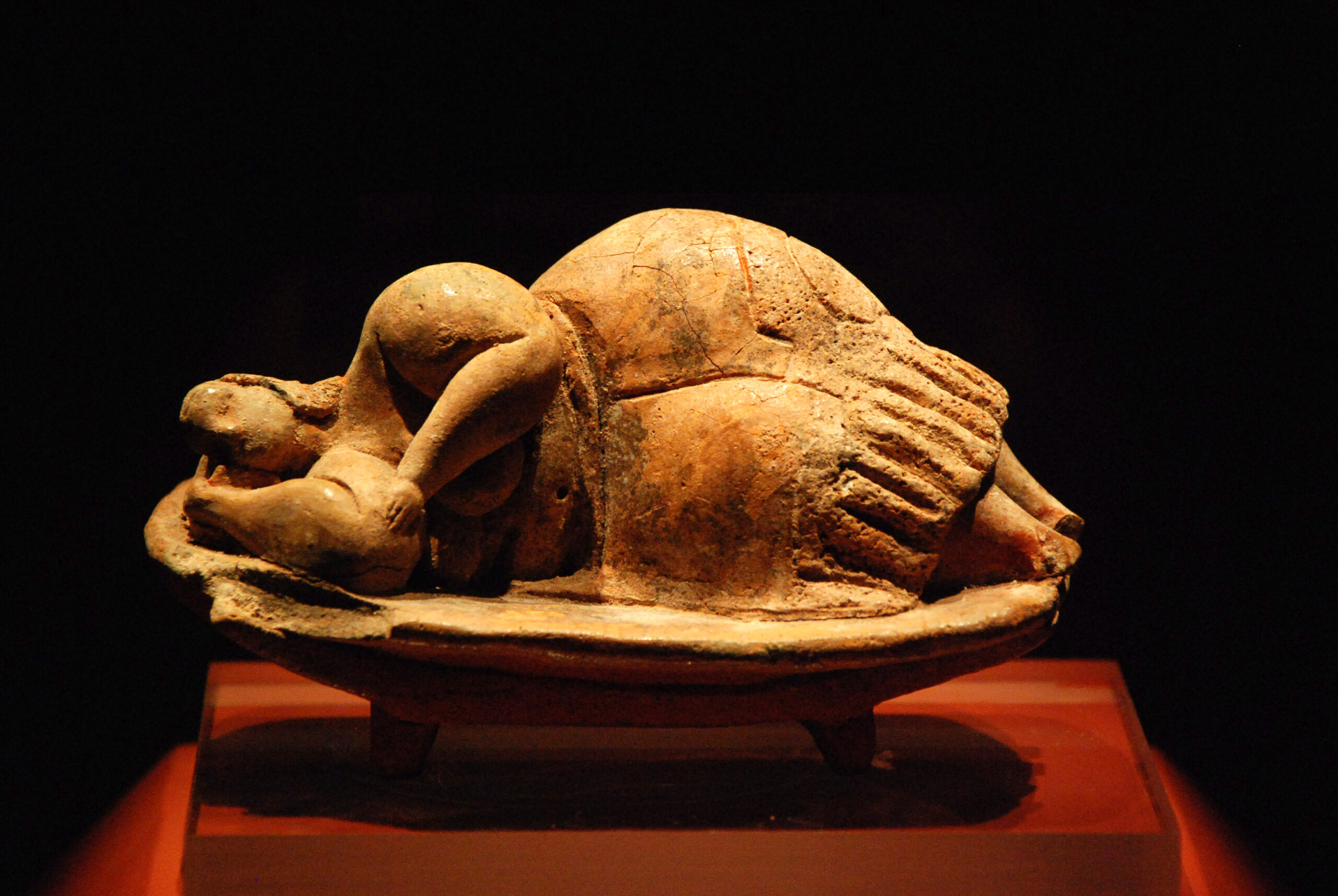
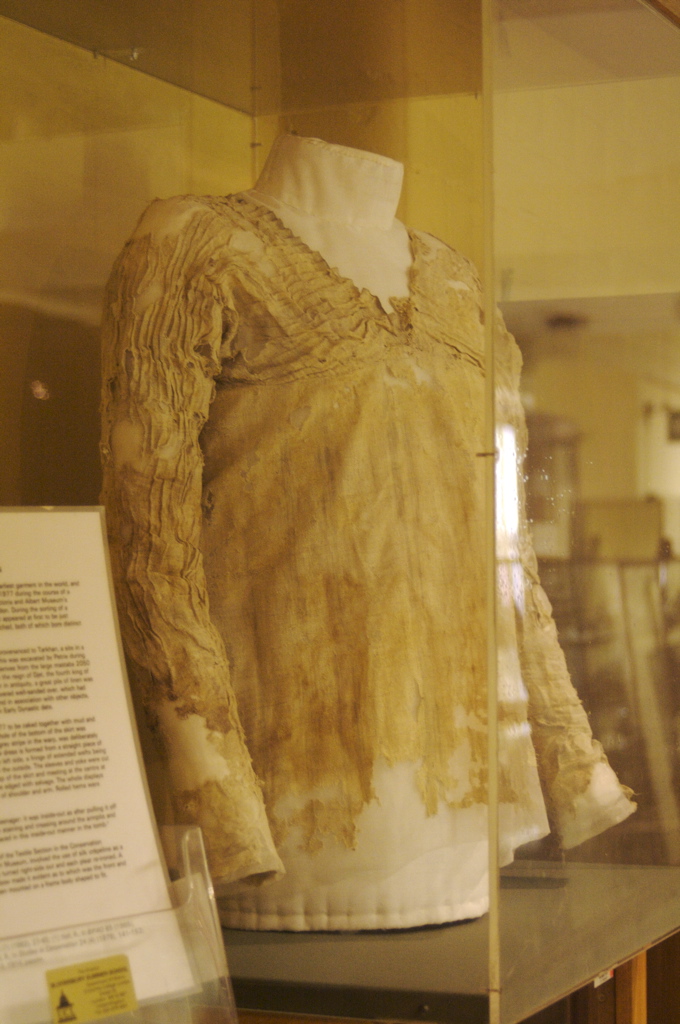
Consider the Sleeping Lady of Malta, a Neolithic clay figurine whose carefully rendered drapery has survived over 5,000 years. Or the Tarkhan dress, found in Cairo, Egypt, which is the world’s oldest woven garment. These ancient artifacts demonstrates how materials have long served as carriers of cultural memory. Today, ten contemporary artists from the Mediterranean and Middle East are reimagining these ancient techniques to tell modern stories of displacement, resistance, and cultural preservation.
Material Witnesses reveals how these materials speak across cultures and traditions, with several of the featured artists exploring the mediums of textile and clay to subvert traditional forms, meanings, and techniques. Paolo Colombo's commissioned works embrace the Chamba Rumal tradition, transforming muslin into intricate narratives through silk thread embroidery. His geometric compositions, originally inspired by Byzantine and Classical mosaics, are reimagined through this medium to add further layers of dialogue between ancient and contemporary visual languages.
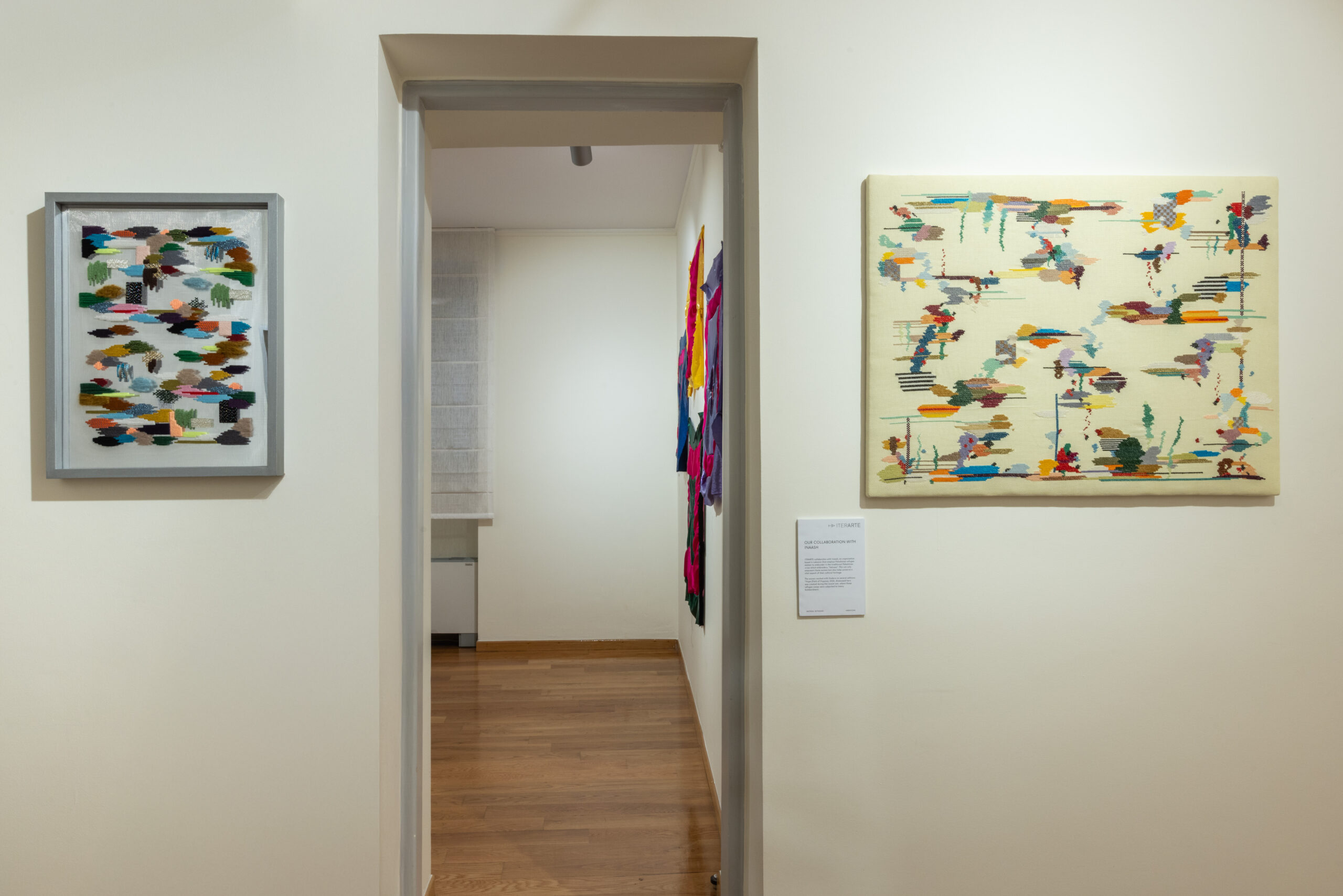
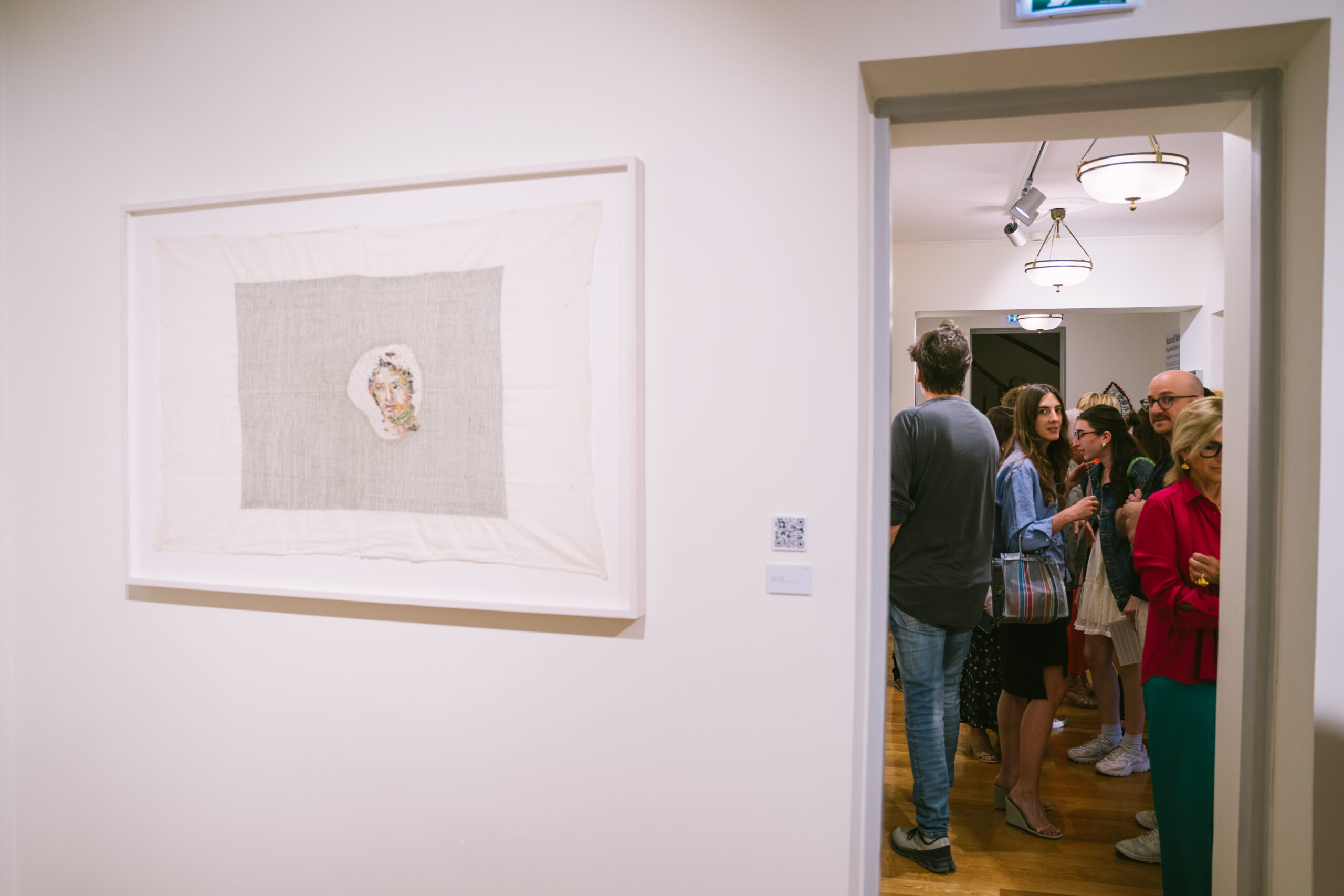
Iliodora Margellos's meticulous cross-stitch embroidery breaks free from traditional structures, creating emotional landscapes that shift between distant and intimate viewing. Her collaboration with Palestinian refugee women through INAASH to produce Hope (Field of Poppies) demonstrates how the ancient craft of embroidery has become a tool of cultural preservation and resistance, as well as a meditative artform.
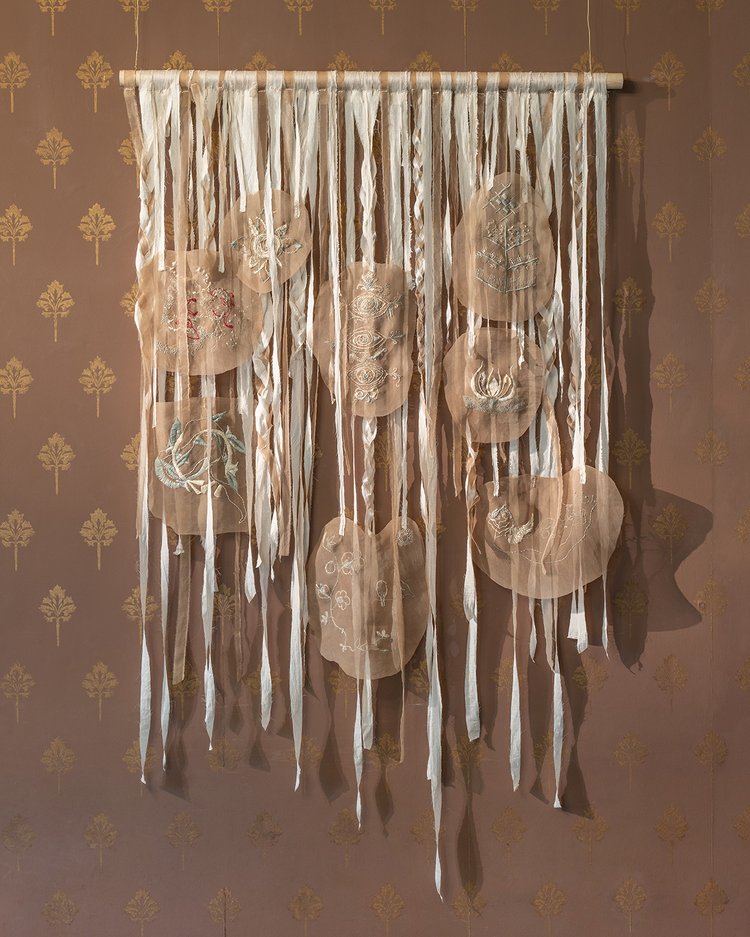
It is reminiscent of a project in 2022 - when Lebanese textile artist Nour Hage worked collaboratively with members of the community on a commission for the Arab British Centre and Leighton House to produce textile installations inspired by Islamic motifs and techniques. This process drew on Levantine traditions such as women collaboratively crafting a bride’s wedding trousseau, transforming communal labour into a commentary on gender and cultural heritage.
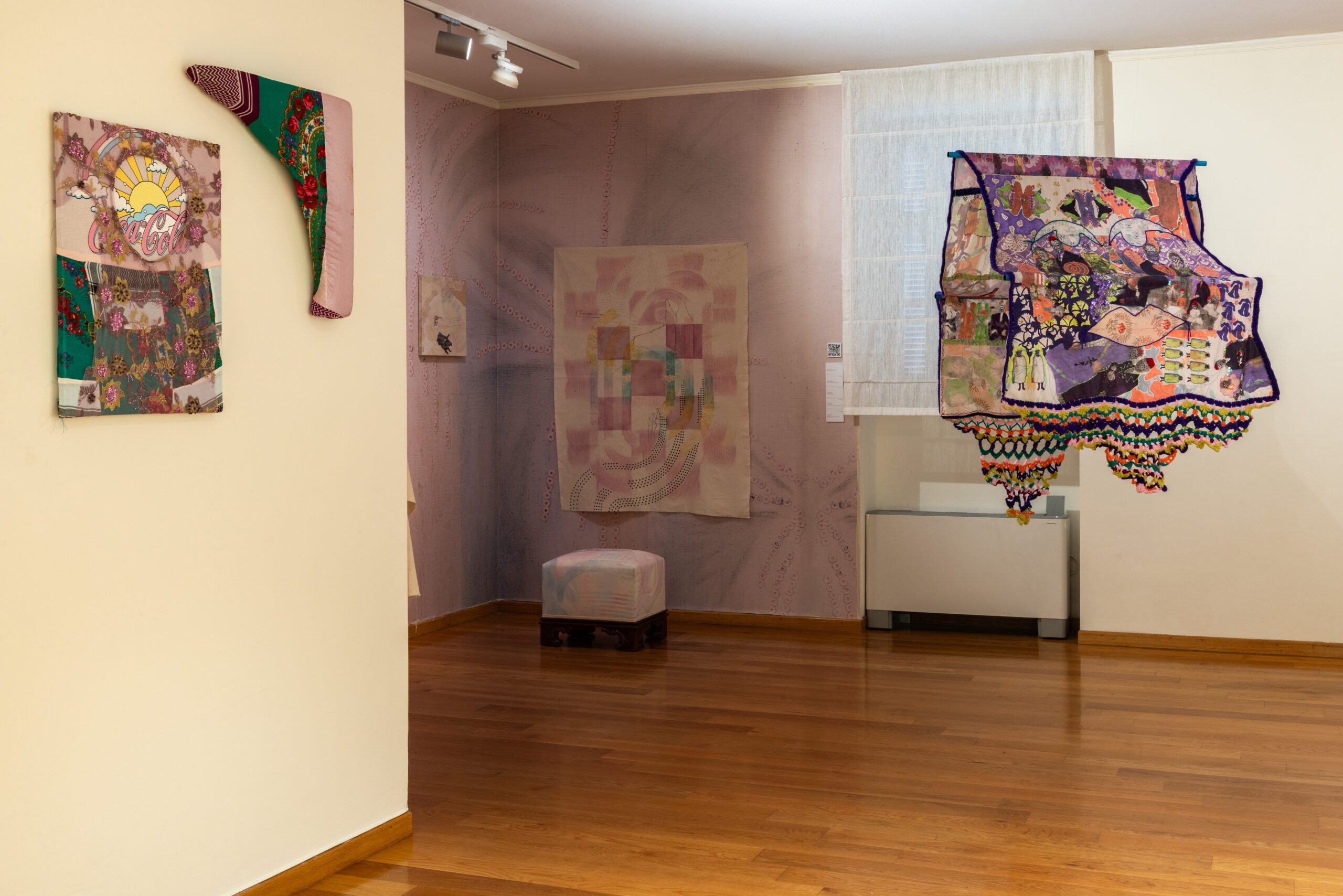
Many contemporary artists are reimagining textiles by repurposing and deconstructing found fabrics and discarded materials, transforming them into powerful statements on identity and preservation. Nuveen Barwari exemplifies this approach in works like Cola u Chiya, where she merges traditional Kurdish dress and mountain imagery with the Coca-Cola logo—a striking commentary on cultural heritage and the tensions of hybrid identity. Similarly, Lydia Delikoura blurs the boundaries between art and function, upholstering her painting The Yield into a functional stool. By uniting the discarded stool and the original painting into something new, their shared materiality and natural decay enter into conversation, revealing beauty in impermanence.

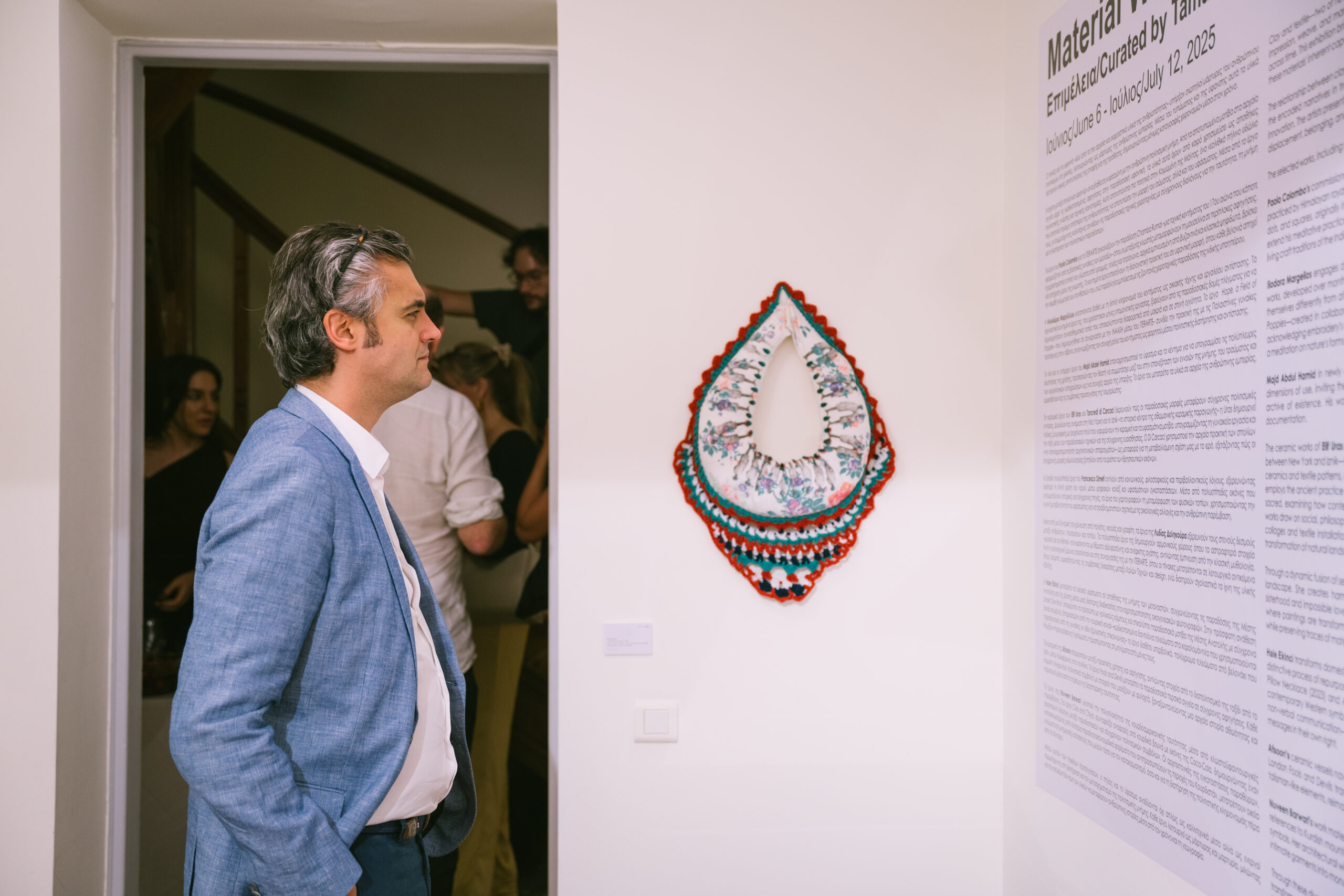
Majd Abdel Hamid's embroidered snapshots of contemporary events transform used fabrics and embroidery threads into archives of existence while Hale Ekinci repurposes domestic textiles into repositories of immigrant memory, merging Western and Middle Eastern symbolism with family photographs to depict her experience of cultural hybridisation. Through these interventions, artists redefine the material legacies they engage with, turning everyday materials into sites of cultural dialogue.
The political potential of these materials remains as relevant today as it was millennia ago. Contemporary artists continue to harness fabric’s tactile language to confront issues of race, gender, community, and myth, weaving personal and collective narratives into their work. Nour Jaouda’s installations, always in states in incompletion or destruction, use fabric as a vessel for recreating the landscapes crucial to her migrant identity - the recent iteration of this unique language displayed at the 2025 Islamic Arts Biennale.

One important exhibition exploring this intersection of craft and activism was the 2023 exhibition Material Power: Palestinian Embroidery, shown at Kettle’s Yard, Cambridge, and later at The Whitworth, Manchester. Through intricate embroidered works, including dresses and installations, the exhibition explored Palestinian identity under colonialism, the gendered labour of preservation, and stitchwork as an unbroken thread of resistance.
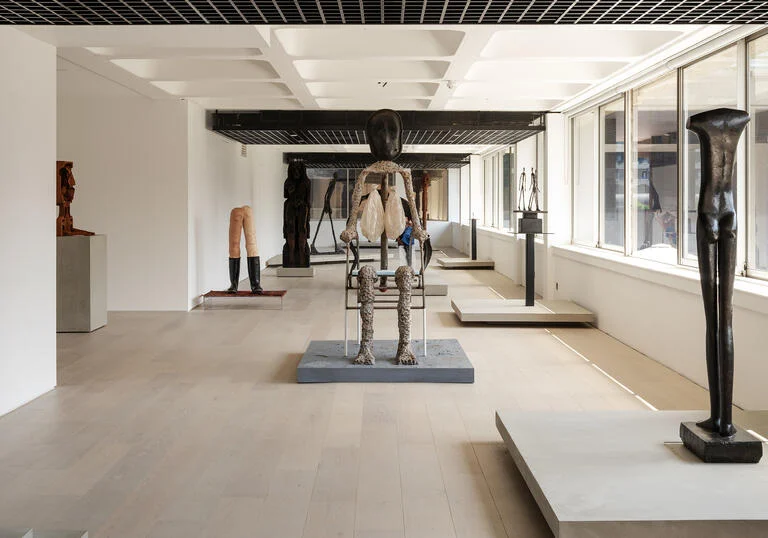
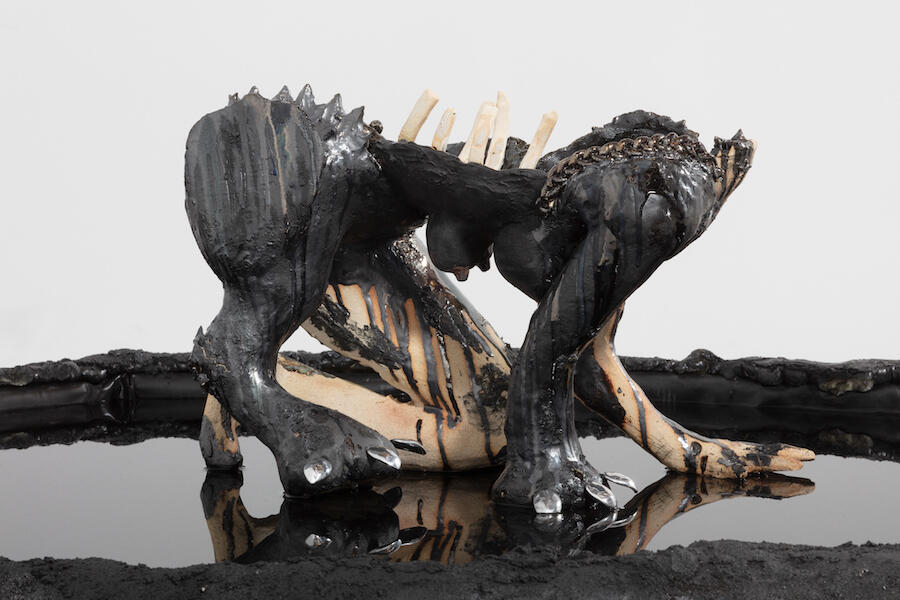
Clay has also been having its moment in the contemporary art world, exemplified in the dedicated ‘Smoke’ section at Frieze London in 2024, curated by Pablo José Ramírez. The exhibition consolidated clay’s pertinent role in the history of art and craft, whilst exploring its potential for modern innovation. It also featured a section highlighting works by indigenous and global majority artists, including Karla Ekaterine Canseco, who uses the practice to interpret mythologies that still apply to the present. Or more recently, Encounters at the Barbican Centre, London presents two sculptors belonging to different generations in dialogue - Alberto Giaccometti and Huma Bhabha, both using a range of materials from bronze to concrete to depict bodies in the context of timeless themes such as death, horror, and the erotic.
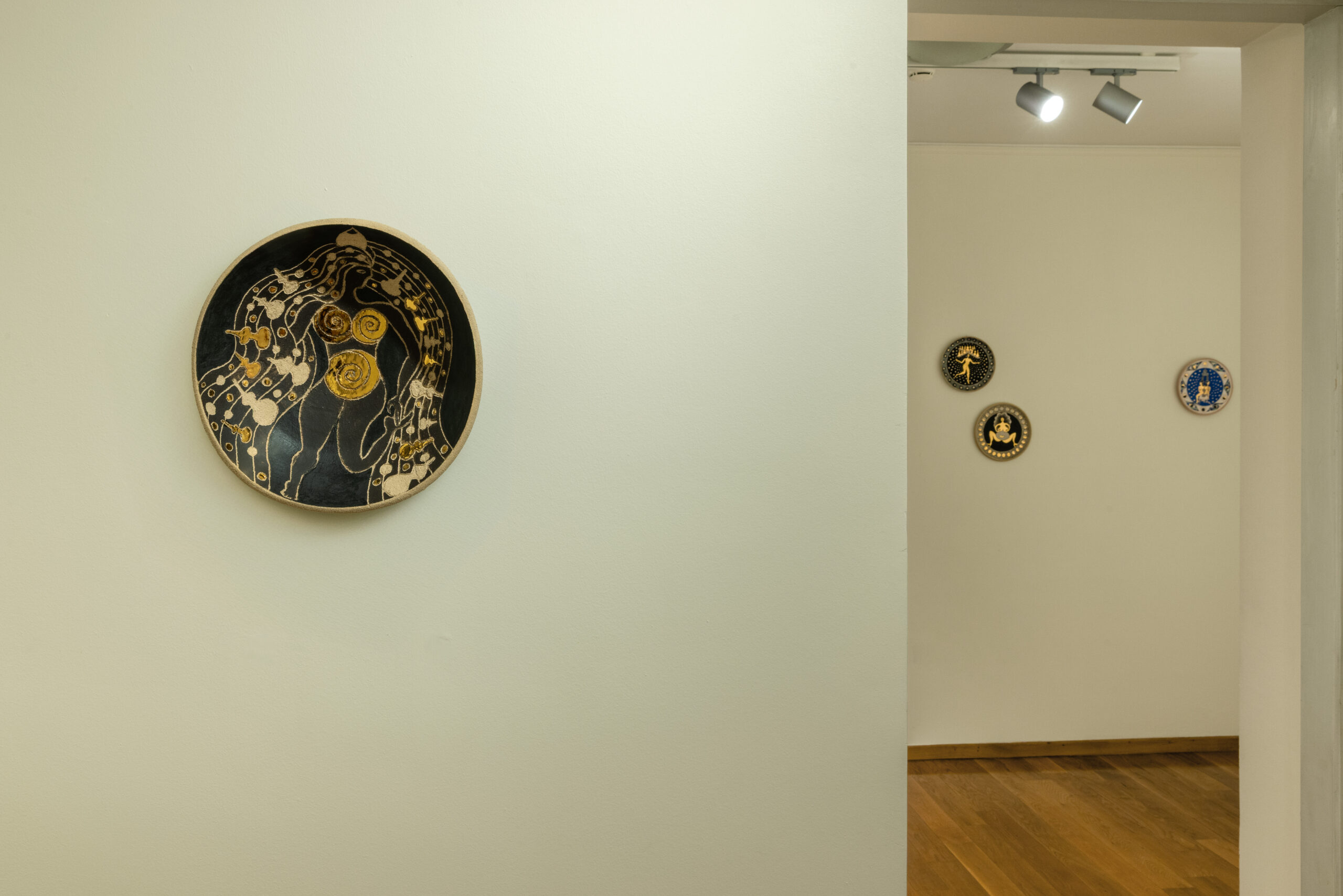
Echoing Canseco’s motives, Tancredi Di Carcaci’s practice uses ancient materials and techniques paired with sacred imagery to confront the realities of the human experience. Elif Uras bridges traditional Ottoman ceramic techniques with contemporary concerns, creating wheel-thrown plate paintings that examine female labour and class dynamics. Afsoon's sculpted vessels merge cultural influences, from folklore to fairytale, that have shaped her diasporic identity.
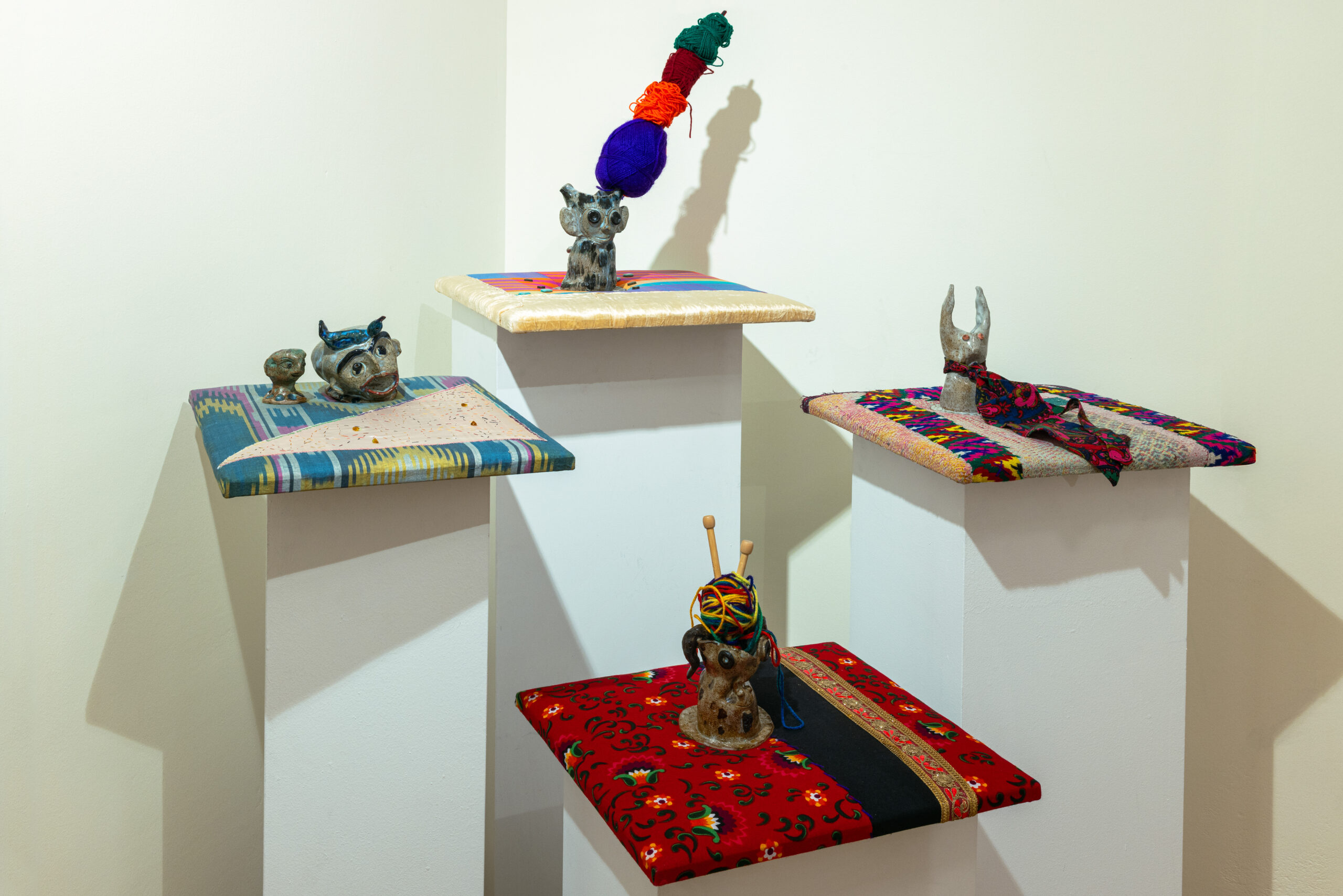
What makes these materials so effective at carrying identity? Perhaps it's their intimacy—clay and textile require direct physical contact, preserving human touch across generations. Or maybe it's their accessibility—these are materials of the everyday, democratic in their availability yet profound in their capacity for expression.
As we grapple with questions of identity in an increasingly digital world, these ancient materials offer something our screens cannot: a tangible connection to human experience across time. They remind us that identity isn't just about who we are now, but about the accumulated gestures, techniques, and stories that have shaped human culture for millennia.
In the end, clay and textile serve as both mirror and memory—reflecting our contemporary selves while preserving the imprint of countless hands that came before. In a world of increasing displacement and digital disconnection, these ancient materials continue to tell our most human stories.
Related Articles
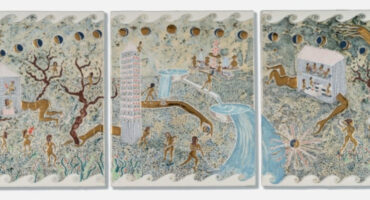 Read more +07 October 2025 By Sibel Moyano in ITINERANT TRAILS
Read more +07 October 2025 By Sibel Moyano in ITINERANT TRAILSA Practice of Resistance: Elif Uras’s Earth in their Hands
The Magazine
Recent Posts
-
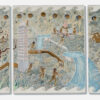
A Practice of Resistance: Elif Uras’s Earth in their Hands
Solo Exhibition at Galerist, Istanbul 16 Sept t... -

Embroidery and Existence: Majd Abdel Hamid on Art and Identity
... -

Material Witnesses Commissions: Afsoon
... -

Material Witnesses Commissions: Lydia Delikoura
... -
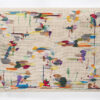
Material Witnesses Commissions: Iliodora Margellos
...
WANT TO STAY UPDATED WITH ITERARTE LATEST ACTIVITES AND NEWS?
Sign up to our newsletter to be one of the first people to access our new art, learn all about our latest launches, and receive invites to our exclusive online and offline art events.

